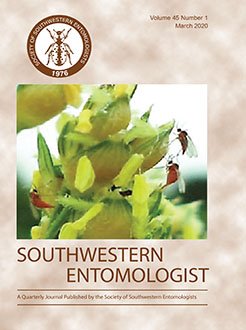The harpactorine assassin bug, Zelus tetracanthus (Stål) (Hemiptera: Reduviidae), is an insect predator frequently found in surveys of saltcedar (Tamarix spp.) in Oklahoma. Previous studies in a laboratory showed it could prey on Diorhabda carinulata (Desbrochers) (Coleoptera: Chrysomelidae), a recently introduced biological control agent for Tamarix. An F2 cohort of Z. tetracanthus was reared from egg to adult to measure stage-specific development rates and describe immature stages at 22 ± 1.0°C and 16:8 light:dark hours. The mean times for development of the five instars were 6.96 ± 0.13, 5.18 ± 0.13, 6.94 ± 0.29, 10.92 ± 0.43, and 17.93 ± 0.76 days, respectively. Several anatomical characters to distinguish instars, including body size, body color, and select morphological characters were described. Data from museum collections of Z. tetracanthus suggested the insect has a univoltine life cycle. The development data contrast with a previous description of Z. socius (= Z. tetracanthus) and illustrate the need to further study the variable morphology, natural history, and genetic makeup of the species.
How to translate text using browser tools
31 March 2020
Development and Life History of Zelus tetracanthus Stål: A Potential Predator of Diorhabda spp. in Tamarix spp. L.
M. E. Ferguson,
A. M. Berro,
J. C. Lindenmayer,
C. Singleton,
T. A. Royer
ACCESS THE FULL ARTICLE

Southwestern Entomologist
Vol. 45 • No. 1
March 2020
Vol. 45 • No. 1
March 2020




